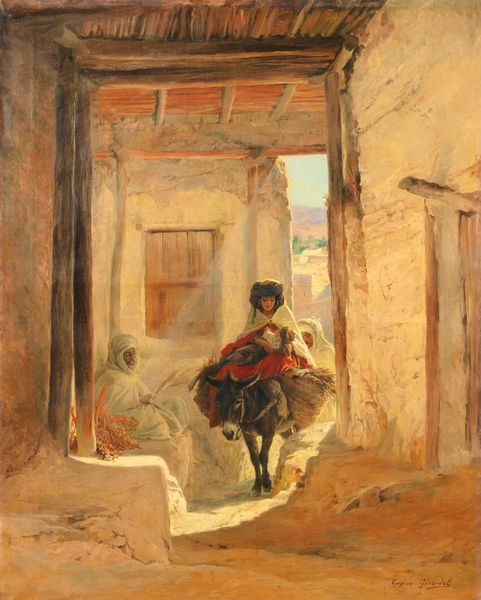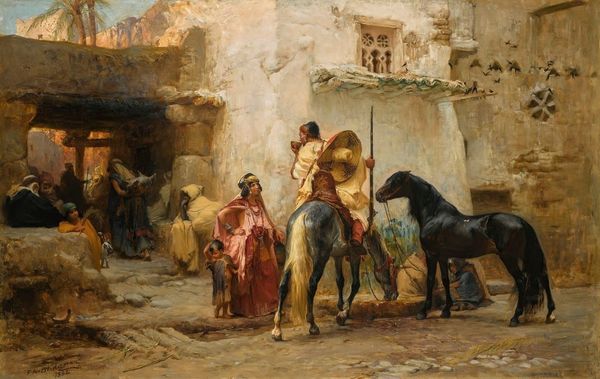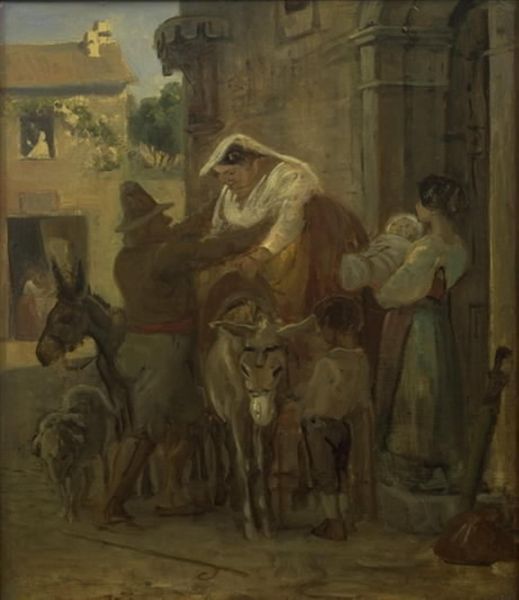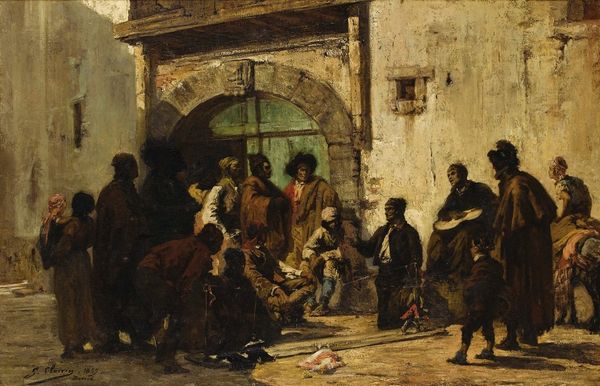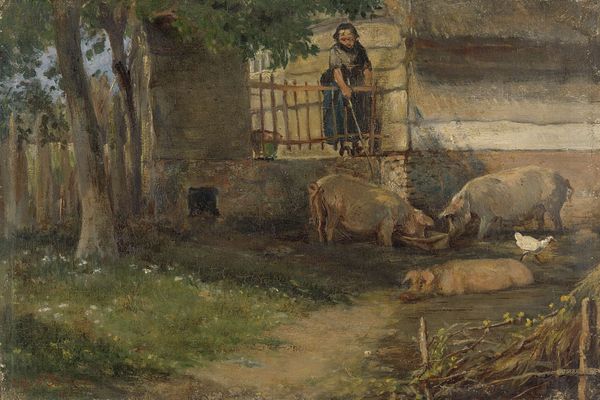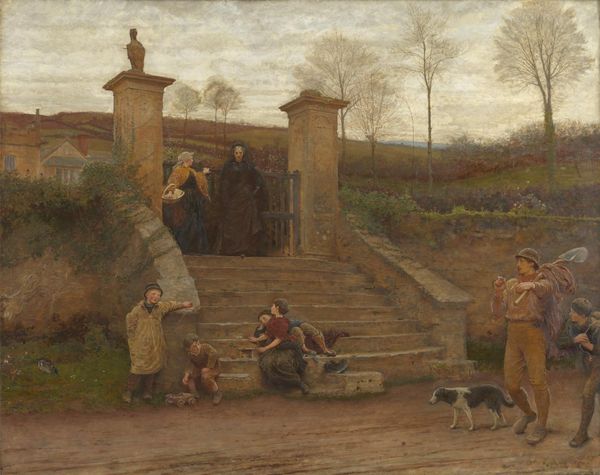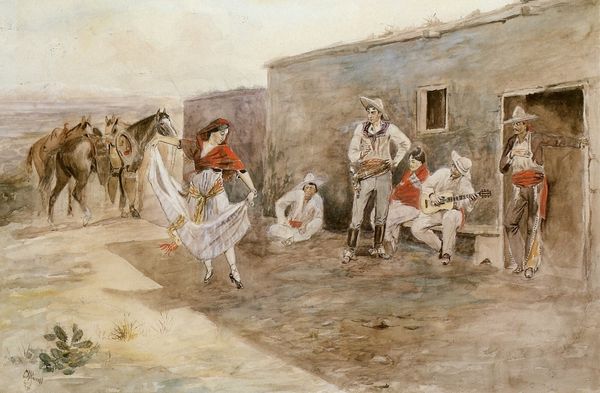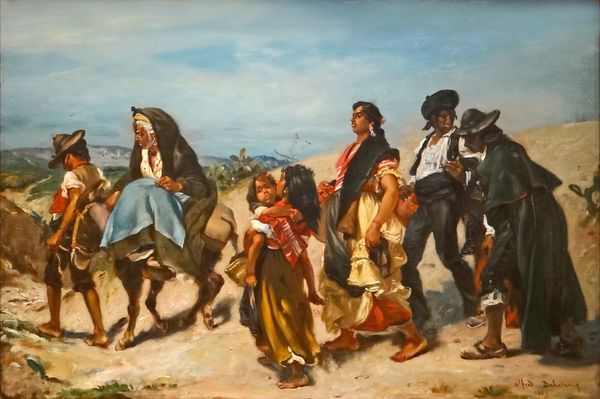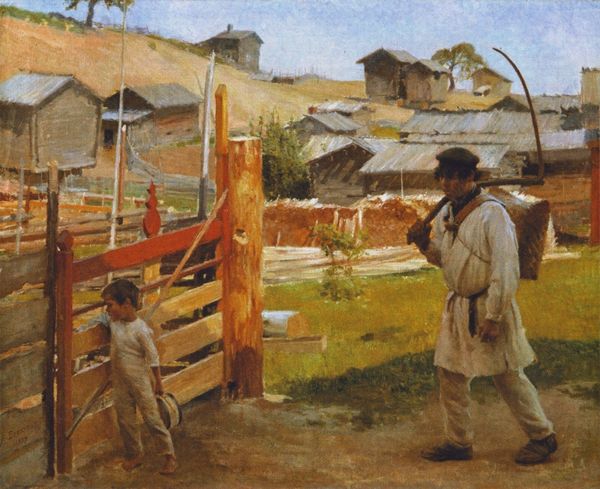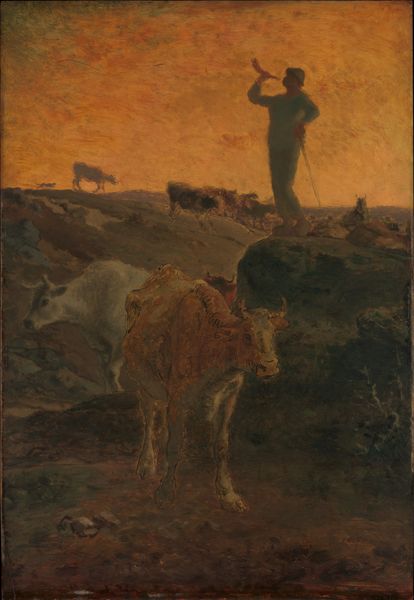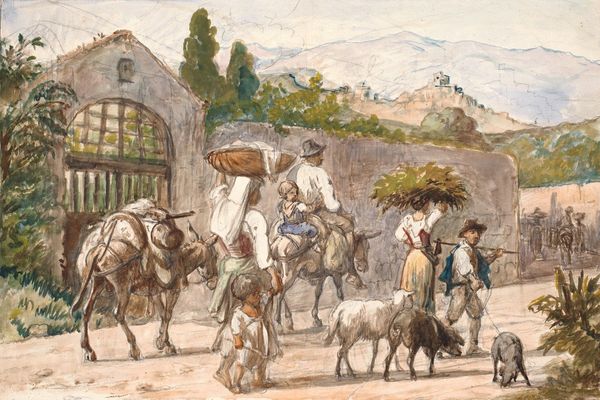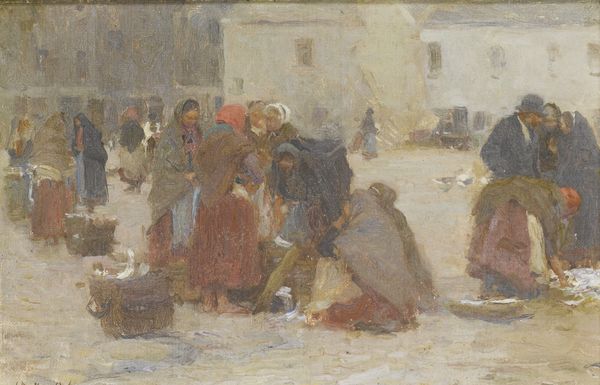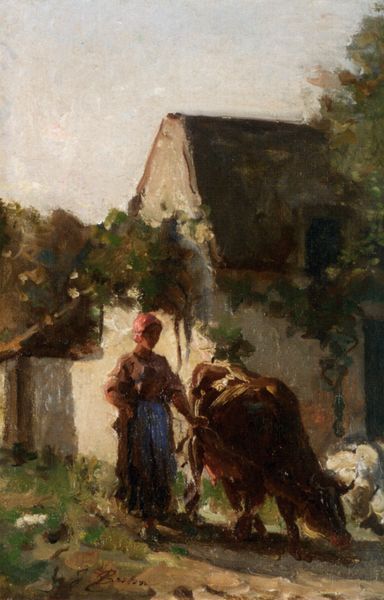
painting, oil-paint
#
narrative-art
#
painting
#
oil-paint
#
figuration
#
oil painting
#
genre-painting
#
academic-art
#
realism
Copyright: Public domain
Editor: This piece, called "Bullfight Scene" by Achille D'Orsi, looks like an oil painting. There’s such raw energy in the bull's movement, and so much tension in the bodies of the people scrambling to get away. What captures your attention in this painting? Curator: As a materialist, my eye is drawn to the visible texture of the oil paint, the marks of its application. Notice how the impasto creates a sense of immediacy and contributes to the overall dynamism of the scene. Consider, too, what materials were accessible to D’Orsi and what that meant about artistic training and perhaps even class. Does that way of seeing affect your experience of it? Editor: It does! Seeing how the paint itself is used gives a sense of the artist’s process. Did this material access affect his style and subject matter? Curator: Exactly. Think about how D’Orsi uses those oil paints. This ‘realistic’ style romanticizes and even glorifies a spectacle dependent on exploiting a bull for entertainment. It almost obscures the labor and material cost embedded in that ‘sport’. In a time of massive economic shifts, these images might function as propaganda, masking larger anxieties. Editor: So, the choice of oil paint, with its inherent cost and connection to a certain academic tradition, and the specific style is not neutral, but reinforces specific social ideas about class and leisure? Curator: Precisely. Furthermore, the composition, leading our eye directly to the bull and the performers, obscures other questions about how labor and production are embedded even in something we might casually consume. Think about who benefitted from bullfighting spectacles and why it remained so popular at this moment. Editor: I never thought of it that way. It is powerful to realize the material of the art can be part of the message, by highlighting the historical labor practices behind this art! Curator: Indeed! Looking at art through a materialist lens invites us to critically engage with not only what we see, but how and why it was made, for what purpose, and how those processes relate to a wider network of cultural, economic, and power dynamics.
Comments
No comments
Be the first to comment and join the conversation on the ultimate creative platform.
